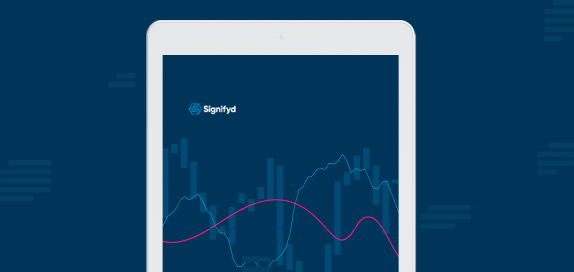For retailers, hurtling toward the heart of the holiday shopping season is something like when the rest of us plan an epic vacation.
You plan for months, not weeks. The trip occupies your mind for an increasing number of hours in the day as it approaches. You think you’ve thought of everything, but you know you can’t anticipate every eventuality.
So, what do you do? Create a last-minute checklist. For retailers facing the holiday season, that’s where we can help. We have some suggestions for a 2024 retail holiday checklist — especially in areas where there are opportunities to make adjustments on the fly now and throughout the holiday season.
Our approach: Examine the external factors shaping Holiday Season 2024 and pencil out some ways retailers might prepare for the effects those factors bring.
Familiarize yourself with the expected shopping trends for this year
Let’s start with three things we know:
- A significant cohort of consumers have become permanent “value shoppers.” In a trend going back to the pandemic days, consumer behavior has increasingly focused on finding a good deal. What’s that you say? Shoppers have always been focused on finding a good deal.
Fair enough, but we’re finding that more shoppers than before are self-identifying as bargain hunters. “Trading down” is the new hot pursuit. Consultancy and services firm EY surveyed consumers and found that 35% identified as “value-seeking” in 2020. That percentage dipped to 27% in 2022. But by this year, it had catapulted to 43%.
What’s behind the rise in value-seeking consumers in 2024? It’s no great mystery. Savings accounts that ballooned with pandemic relief payments have all but deflated. Inflation has slowed dramatically, but prices remain high — particularly for necessities, like food and housing. The labor market and wage growth remain healthy, but periodic slowdowns in job growth have spawned economic uncertainty and worry. And long-term — as in over the past three years — wage growth ( 17%) has not kept pace with the increase in the Consumer Price Index (20%). - Consumer sentiment provides reliable clues concerning holiday shopping behavior. In 2023, 80% of consumers surveyed by Signifyd said they would curb their spending compared to the previous year because of inflation. In the same survey conducted by OnePoll, 61% said they’d be spending more on non-discretionary items, like groceries as the year went on. When the holiday season rolled around, consumers showed themselves to be extreme discount enthusiasts. Signifyd data showed that 38% more online orders during the Cyber Five (Thanksgiving through Cyber Monday) were placed with discount codes than during the Cyber Five in 2022.
The good news? Holiday sales increased by 7% in 2023 over the previous holiday season. Signifyd is projecting a similar increase this year. Clearly, discounts will play a big role in 2024. Signifyd Senior Data Analyst Phelim Killough put it this way: “Retailers can expect shoppers to be value-oriented throughout the holiday season, looking for deals and trading down for less expensive items.”
3. Online fraud — and first-party fraud in particular — is on the rise. While payments fraud has been a constant menace, fraud committed by rightful cardholders has become the top concern for nearly half of merchants surveyed by the Merchant Risk Council. In fact, the Merchant Risk Council issued a rare email warning to retailers this summer alerting them to first-party or friendly-fraud-type attacks being carried out by professional criminal rings.
When we think of friendly fraud our thoughts generally go to scams such as falsely claiming an order never arrived or the product that arrived was in unsatisfactory condition or not like what was described on a merchant’s site. But more broadly, Signifyd is also seeing an escalation in promotion abuse and unauthorized reselling. The holidays — with their high-volume and unusual order characteristics — provide convenient cover for bad actors looking to take advantage.
How can I prepare for the 2024 holiday shopping season?
So, given Nos. 1 through 3, what does a last-minute holiday checklist look like? Here are seven things for the top of your 2024 retail holiday list:
- Launch an intentional discounting strategy: In 2024, consumers are echoing the high reliance on discount codes we saw in 2023. During the first weeks of the holiday shopping season (October through December) discount use online was up 22% over 2023, according to Signifyd data. Be prepared to offer deeper discounts on certain products or wider discounts on your inventory overall. Set your own guardrails on discounting as early as possible and consider value-oriented ways to differentiate yourself beyond price cuts alone (shipping deals, bundling products, future discounts in return for present-day purchases). Discounting can become a race to the bottom during the holiday season and you don’t want to end up giving away the store — literally.
- Actively managed private label brands: Be ready to boost private label items on your sites should overall sales begin lagging. Depending on the products, consider building packages of two or several complementary private-label products. Shift marketing efforts to private label alternatives if need be.
Why? Consumers have been embracing a trend of trading down for months. In fact, it’s possible that trading down is no longer a trend but a fact of retail life.
Nearly half of consumers (48%) polled by Consultancy EY said brands are not important to them when they’re making a purchase decision. Moreover, 38% of consumers said they don’t plan to switch back to their favorite name brands after having moved to private-label goods. And 34% said they are happy to buy cheaper substitutes rather than more expensive high-end products.
That’s the current state. The future state? 29% of middle-class shoppers and 28% of low-income and high-income consumers say they will buy more private label goods in the future, according to EY. - Consider boosting awareness of your buy now, pay later options: Signifyd’s data over many months have shown that consumers are still willing to spend, but are being more cautious about what they’re willing to spend on. BNPL might provide an opportunity for some consumers to buy gifts now — particularly when they are discounted — and pay for them later.
After all, paying for holiday gifts months after they’ve been given and received is practically a holiday tradition in itself. - Be proactive when it comes to customer experience challenges: If fulfillment delays or inventory shortages become an issue, be sure to communicate fully and quickly with customers on the other end of the order. Let them know when they can expect their orders and keep them updated. Consider offering a gesture that will help smooth things over — a low-value gift card, free delivery, a small gift.
During the holiday season merchants will see an unusually high volume of first-time customers. It’s a chance to make a great first impression and possibly win a customer for the long term. Just as important, customer experience failures lead to chargebacks — an item not received chargeback for instance — from frustrated customers who under ordinary circumstances would not have filed a chargeback. Staying in communication can defuse the situation.
- Prepare for rising fraud and abuse: Be ready to beef up your fraud protection given the high order volumes that the holiday season generates. Peak sales periods provide convenient cover for fraudsters and organized fraud rings looking to take advantage of heavy workloads among retail workers — including fraud and risk teams. Should you find yourself under a fraud attack or worrying that you are declining good orders out of an overabundance of caution, bulk up your risk management resources.
Hiring and training additional reviewers — even temporarily — can be inefficient and particularly daunting in the heat of the holiday season. Consider automated solutions, even as a way to handle holiday overflow, to get you through the fourth quarter. - Get ready for the returns deluge: You know it’s coming — the Q1 spike in the return of gifts that missed the mark or didn’t properly fit the more ample 2024 version of Uncle Antonio. Prepare in a fiscal sense by reviewing holiday returns historically and adjusting your holiday financial forecast. And prepare in a strategic sense by preparing systems to weed out abusive and fraudulent returns.Historic consumer behavior can provide a clue as to whether a customer requesting a return or refund presents a risk. Had the customer engaged in questionable, abusive or fraudulent returns in the past? Any problems with dubious claims that a package never arrived or that a product arrived in unsatisfactory condition?
Of course, a significant portion of holiday returns could be arriving from gift recipients who’ve never done business with you. You might consider adjusting your return policies in those cases. For instance, you might decide to receive and inspect the returned item before issuing a refund. Or you might add a processing fee for returns, so consumers give some thought to returning an item. Ideally, you’ll want to determine whether a return request is risky or not before adding friction to the process. You might provide a rapid return for a loyal and high-value customer, for instance, while offering store credit or holding a refund until the returned product is in hand for a customer whose return appears risky.Don’t take charging for returns or tightening up the rules lightly. Survey after survey indicates that consumers value free and easy returns. You might consider adding a perk on the one hand: Say extending the return window during the holiday season so that gifts purchased in November can still be returned in January. On the other hand, you might tighten up the return process in some cases by delaying refunds until after a returned product has been inspected. - As we’ve counseled before, take care of yourself and your team: Holiday preparation takes a lot of energy and focus. When things don’t go right after all of that work, it can be frustrating and lead to feeling defeated. Stop. Take a deep breath — literally. Consider all that has gone right. Remember why you do the work you do. Why you’ve chosen the career you have.
January will be here before you know it. And of course, the work hardly stops then. But there will be calm between storms and a chance to reflect on the holiday season that was. Which actually, adds one more thing to your list: Make notes. What worked and what didn’t? And when holiday 2025 rolls around, add those lessons to next year’s holiday checklist.
Photo by Getty Images
Want to avoid turning away good orders during the hectic holiday season? We can help.







